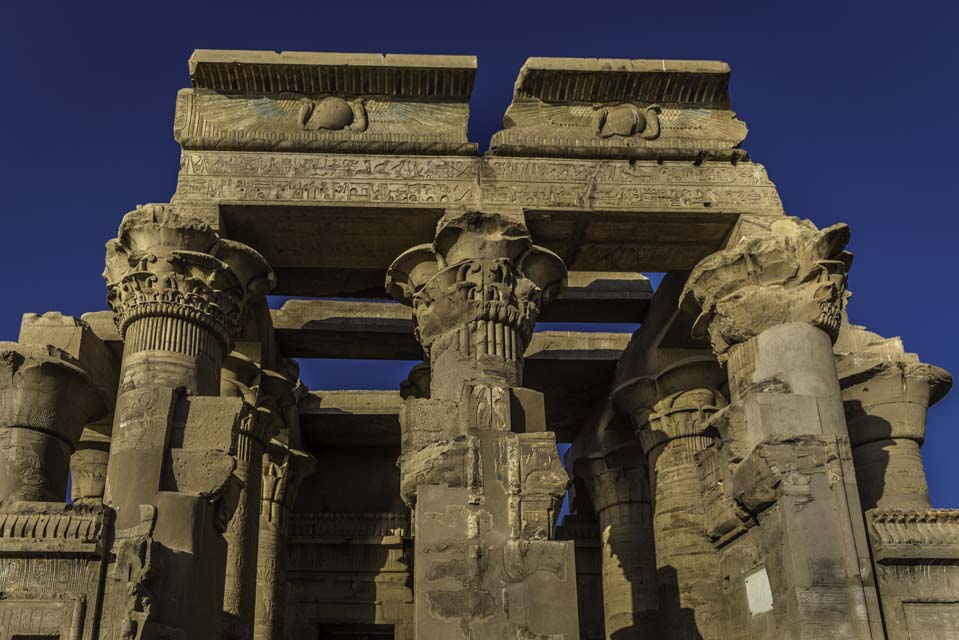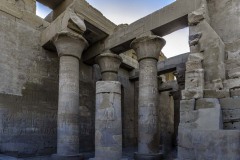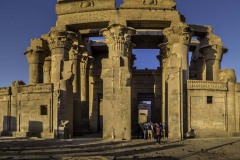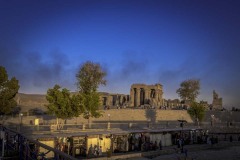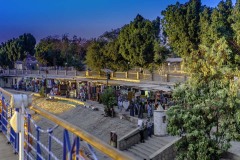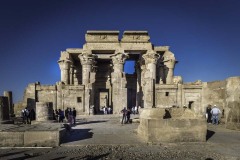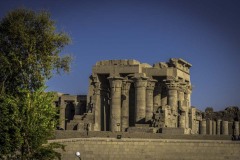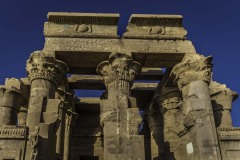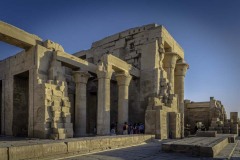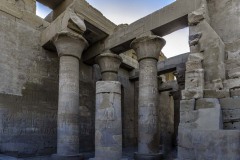The Temple of Esna, also known as the Temple of Khnum, is an ancient temple located in the city of Esna, in southern Egypt. The temple is dedicated to the god Khnum, who was believed to be the creator of the Nile River and the patron of pottery and creation.
The temple was originally built during the reign of Ptolemy III in the 3rd century BC, and was later expanded and renovated during the Roman period, between the 1st and 3rd centuries AD. The temple is renowned for its well-preserved ceiling, which depicts astronomical scenes and the zodiac signs.
The temple was buried under sand and debris for centuries, and was only excavated in the 19th century. Today, the temple is open to visitors and is considered an important historical and archaeological site in Egypt.
Esna is about 485 miles (776 kilometers) south of Cairo and lies on the west bank of the Nile. The temple of Esna,near Luxor dedicated to the god Khnum, his consorts Menhit and Nebtu, their son, Heka, and the goddess Neith. Esna temple held a special place among the holiest temples of ancient Egypt, as it represents one of the main aspects of ancient Egyptian life
The Temple Of Esna Tuthmosis III laid the foundations of the Temple in the 18th Dynasty, but Ptolemaic and Roman Emperors completed it between 40 to 250 A.D., and their names are recorded all over the temple walls.
According to inscriptions carved on the walls of the Temple of Esna, those who entered this temple were expected to fastidiously cut their fingernails and toenails, remove other body hair, wash their hands with natron (a natural occurring salt), be dressed in linen (they were forbidden from wearing wool)
The important od The Temple Of Esna
The Temple of Esna is an important historical and archaeological site in Egypt for several reasons:
- Religious significance: The temple was dedicated to the god Khnum, who was an important deity in ancient Egyptian religion. As the creator of the Nile River and the patron of pottery and creation, Khnum was highly revered by the ancient Egyptians, and the temple served as a place of worship and pilgrimage.
- Architectural significance: The temple is a well-preserved example of ancient Egyptian and Roman temple architecture. It features a hypostyle hall with 24 columns, decorated with intricate carvings and hieroglyphics. The temple also has a unique astronomical ceiling that depicts the constellations and zodiac signs.
- Historical significance: The temple was built during the Ptolemaic period and expanded during the Roman period, making it an important example of the influence of these cultures on ancient Egyptian religion and architecture. The temple also has inscriptions that provide insight into the religious beliefs and practices of the time.
- Tourist attraction: The Temple of Esna is a popular tourist destination in Egypt, attracting visitors from around the world. The temple’s well-preserved decorations and unique astronomical ceiling make it a must-see attraction for anyone interested in ancient Egyptian and Roman history and architecture.
Overall, the Temple of Esna is an important cultural and historical landmark in Egypt, providing valuable insight into the ancient Egyptian civilization and its religious beliefs and practices.

